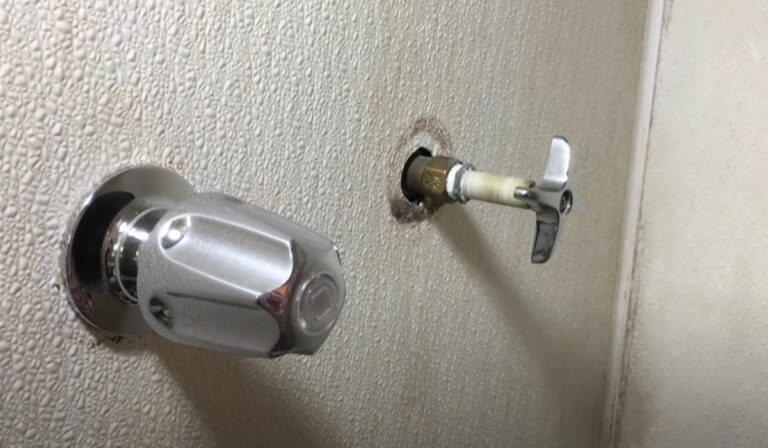Understanding Bathtub Overflow Plate: Its Purpose and Function
In all bathtubs, the one common thing that you’ll notice is a small hole at the side of it. This part is also known as overflow.
And the gear used to secure the overflow hole in a protective way is called an overflow plate or cover. It does a great job of preventing filling the tub fully, adding air gaps to drain water ASAP, and stopping objects from getting into the drain pipe.
If you are interested to know more about it, I’ll explain exactly what an overflow plate is in a bathtub and its purpose, types, components, and installation procedure here. Let’s Go!
What Is an Overflow Plate in a Bathtub and Its Function?
In simple terms, it is a cover that goes straight to the bathtub’s higher drain hole, which prevents water from overflowing. After knowing the definition of the overflow plate, it’s time to discuss its function. Here are the details:
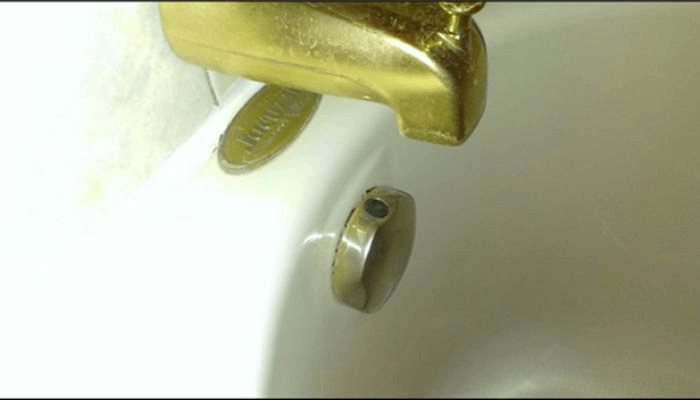
1. Stop the Tub from Overflowing
Thanks to the overflow plate, you can freely fill the tub without having a fear of overflowing it and soaking the floor with water. It lets you hit the water in the tub to the highest range (right below the higher drain).
Due to this, the water inside the bathtub won’t go up or over the sides, which often occurs if it gets blocked.
Plus, if you tend to forget to turn off the water in time, this simple gear does a great job of never filling the tub from its drain level. And so, the floor remains dry and damage-free while the tub tends to fill at the right height.
2. Provide Air Gaps
For those people who prefer a fast-draining process to remove all the dirty water from the bathtub after usage, the overflow plate helps in this process with air gaps.
Well, it just adds air gaps as the upper portion of the plate remains waterproof while the lower side covered in water creates air to the water. Therefore, the water runs faster to get out from the bathtub and drain.
3. Prevent Hair or Objects to Enter the Drain Pipe
Another great function of the overflow plate is that it blocks hairs, debris, or objects from entering the drain pipe. In other words, it allows only water to surpass while the rest of the stuff stays inside the tub or gets stuck, which is noticeable.
Plus, the overflow plate works like a protective barrier which ensures the right working of the drain system by stopping objects from clogging and blocking the path.
Different Types of Overflow Plates!
Most of the time, you’ll find 4 kinds of overflow plates with unique and noticeable traits. Let me break down all of them below:
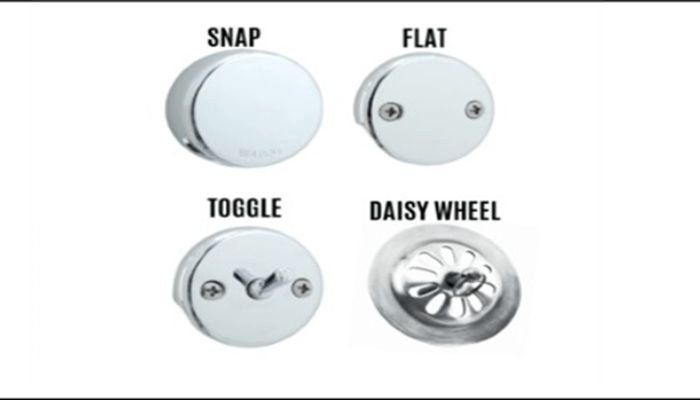
Components of an Overflow Plate!
To install or remove the overflow plate in your bathtub, it requires you to know all its parts. In case it’s new to you, here are the components of it:
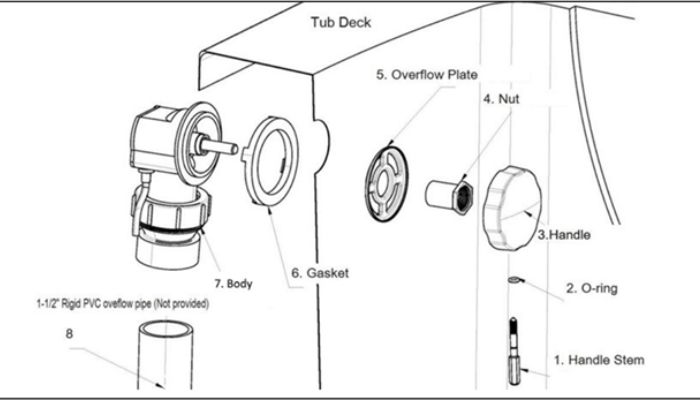
If your touchless faucet has no control box then the battery pack and solenoid of the faucet are inside the spout. At this point, you need to remove the body of the spout to access the battery pack and solenoid.
How to Install Overflow Plate in a Tub?
If you want to add a new overflow plate in the bathtub, then I’ll explain how you can do it at home and save up to $100 – $300 dollars. Let’s begin:
Installing Snap-on Overflow Plate
To begin with, take out the attached overflow plate from the tub. Then, insert the gasket and put it on the metal plate.
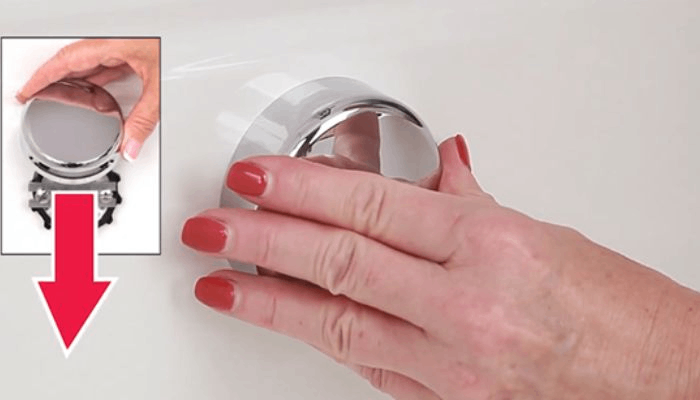
After that, attach the 2 screws on the left and right sides or one screw in the middle (based on the hole). Next, tighten the screws using a Philips screwdriver. Then, put on the Snap-on overflow plate and push it to lock into place.
Installing Flat Overflow Plate
You’ll need to remove the old overflow plate by unscrewing it. Then, clean the surface if it seems dirty with a lint-free cloth.
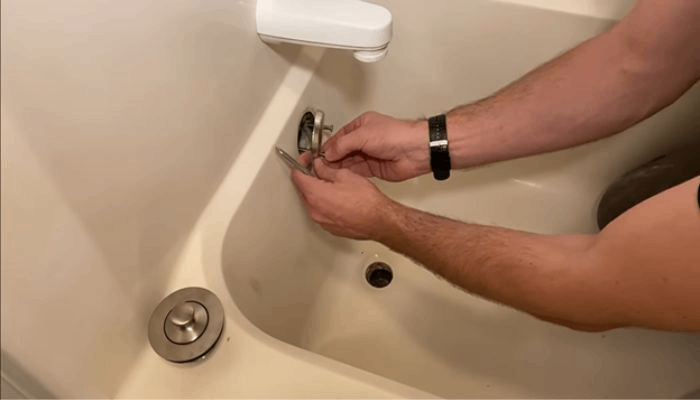
After that, attach the metal plate behind the overflow plate and insert one or two screws from the front side. Then, put it directly on the tub’s overflow area and tighten them out with a Phillips screwdriver.
Installing Toggle Overflow Plate
Start by detaching the overflow plate that is inserted in the tub. Next, pull out the old overflow plate and detach it from the linkage by taking out the cotter pin.
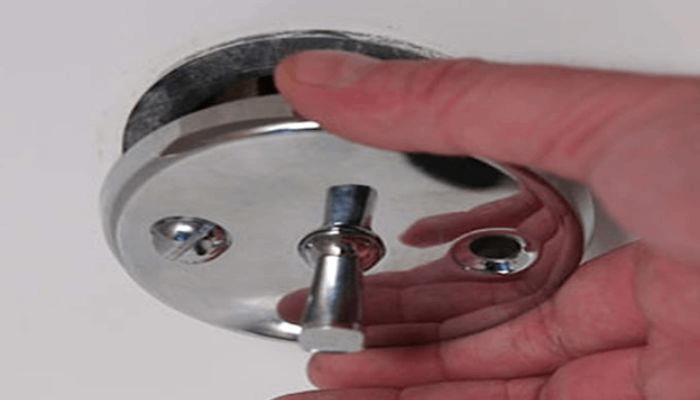
Then, bring the new plate and connect it to the linkage. After that, push the new overflow plate into the tub and insert 2 screws on the left and right sides. Next, tighten them out with a flat screwdriver and test out the trim lever to see if it works or not.
Installing Daisy Wheel Overflow Plate
Since it’s an old-style plate, you’ll need some tools like two screwdrivers and a vise grip. Just make an H using these tools and then twist the two screwdrivers while holding one with a vise grip to remove the old daisy wheel overflow plate.
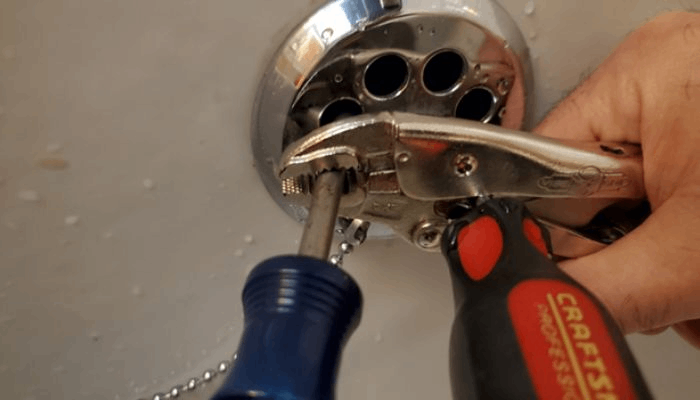
If it seems stuck or not coming, use WD40 lubricant and let it sit for 15 minutes before removing the old overflow plate. Next, clean the tub hole where the plate goes.
After that, insert the new overflow plate in the plate and push it tightly. Then, twist it in a clockwise direction until it locks. Next, attach the chain and rubber drain stopper (if it comes with the kit).
Ending Notes
An overflow plate in a bathtub is an essential item that everyone should add to get rid of overflowing issues. It’s simple to maintain, install, and use.
Hope you find this guide helpful and informative to know about the overflow plate. And, ensure to check how to fix the yellow hot tub water here if this is the current issue that you are facing.
Keep on reading!


